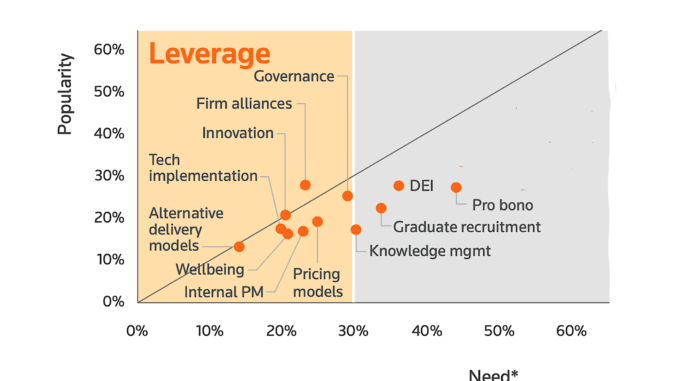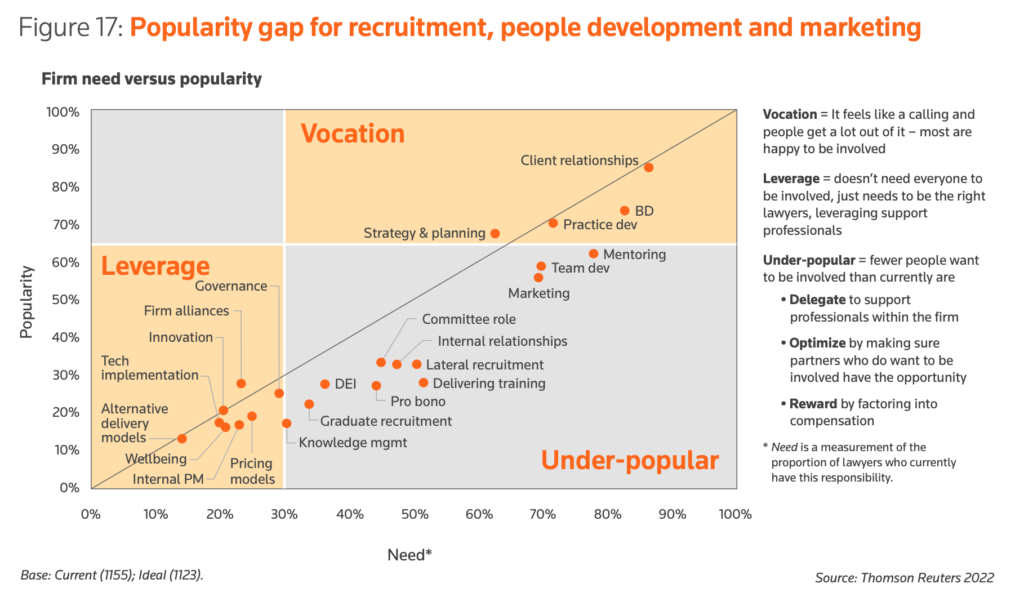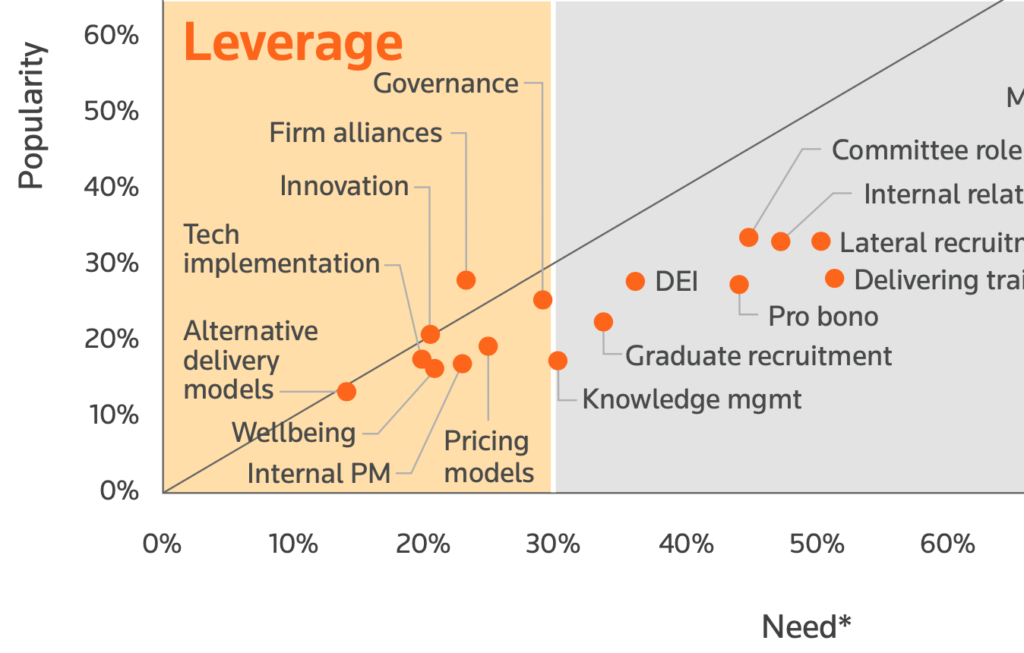
New research by Thomson Reuters (TR) shows that most US lawyers are not that excited about committing non-billable time to legal tech implementation, innovation, KM, or alternative delivery models.
What really excites lawyers are the traditional ‘meat and two veg’ of professional life in a big law firm: client relationships, business development, and practice development, with the first aspect hitting about 90% popularity.
Whereas tech implementation got only a 20% popularity rating. But the firms also only gave this area about a 20% ‘need’. I.e. firms are not that focused on getting most of their fee-earners involved in this area of non-billable work, nor do most lawyers want to do it. Working on KM was also a low-scoring area, for lawyers and their firms.
And people wonder why legal tech adoption is relatively slow…..
The chart below shows how TR, in its new ‘State of the Legal Market 2022’ report, painted this picture.

A spokesperson for TR explained the chart to Artificial Lawyer like this: ‘This chart is of only non-billable activities. The scatter plot basically shows what lawyers ARE doing for non-billable vs. what they WANT to do. The horizontal axis (Need) shows which responsibilities they are currently assigned. The vertical axis (Popularity) shows which responsibilities they WANT to be doing.
‘The Vocation quadrant (upper right) is the sweet spot: non-billable responsibilities that need to involve most lawyers in a firm, and the lawyers gladly participate in.
‘Under-Popular (lower right) are responsibilities that are not necessarily popular, so firms need to look explore tactics such as delegating to staff to help support or maybe incentivising lawyers to participate.
‘Leverage (lower left) is where firms need to completely re-evaluate.’
I.e. the Leverage area is where law firms are not assigning many fee earners to do those tasks, and the lawyers equally are not that thrilled about doing those things. Below is an inset of the Leverage quadrant of the chart.
Interestingly, ‘wellbeing’, a major theme at the moment, was equally unpopular for lawyers and firms.

One reason for some of this is that law firms have teams of legal tech and innovation specialists to do this work. And naturally, no-one would expect fee earners to be wholly responsible for managing some of these areas.
But, it does also suggest that for those firms that want their lawyers to engage with innovation in their ‘free time’ (if such a thing exists any more, even if some firms offer ‘innovation hours’) then not everyone is on board. What most really want to do is win new clients.
That said, firms are also clearly not expecting more than a fifth of their lawyers to engage with these tech/innovation needs either.
Overall conclusion: law firm culture is changing (slowly), but it largely remains close to traditional lawyer expectations and patterns of behaviour.